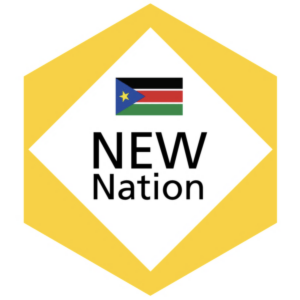South Sudan

The Block
Welcome South Sudan to Quilt of Belonging! At the time the physical Quilt was being made, South Sudan was not a separate nation. Its people and lands were part of the country of Sudan and as such were included in that block. Now, recognizing the distinct identity of this new nation, we invite you to learn about South Sudan in the Cultural Profile, photos and videos below.
Cultural Profile
South Sudan is the planet’s youngest country, since it declared its independence from Sudan through a referendum in 2011. Located close to the Equator, its territory is made up of tropical forests, grasslands and swamps along the White Nile River, which crosses the country from south to north. The population is made up of many ethnic groups, with the Dinka, the Nuer, the Shiluk, the Bari, and the Azande being the most numerous ones. The official language is English, although over 60 indigenous languages are widely used and preserved. Juba Arabic (named after the city of Juba) and Swahili are also spoken.
The country’s economy relies heavily on its vast resources of oil and gas. However, most people are employed in subsistence agriculture, growing cereals, maize, fruits, peanuts, and vegetables. Cattle grazing provides beef. Exotic hardwoods such as teak are also important exports.
Traditional cultural elements are proudly safeguarded by the members of ethnic groups as languages and traditional rites are seen as cornerstones of one’s identity. Initiation rites include scarification for the Dinka and Nuer people and tattooing for the Bari people. The country’s culture has also been influenced by its immediate neighbours such as Ethiopia, Kenya, and Uganda.
Traditional crafts of the country include basket making, wood carving, and beaded jewellery. The traditional thatched roofs of South Sudanese houses are also a common sight. The preservation of traditional crafts and techniques is difficult as many people have been displaced because of civil unrest.
South Sudanese have been listed as coming to Canada since 2011. Before that, they were recorded as Sudanese. They have been coming here mostly to escape decades of unrest in their homeland.
Sponsor:
